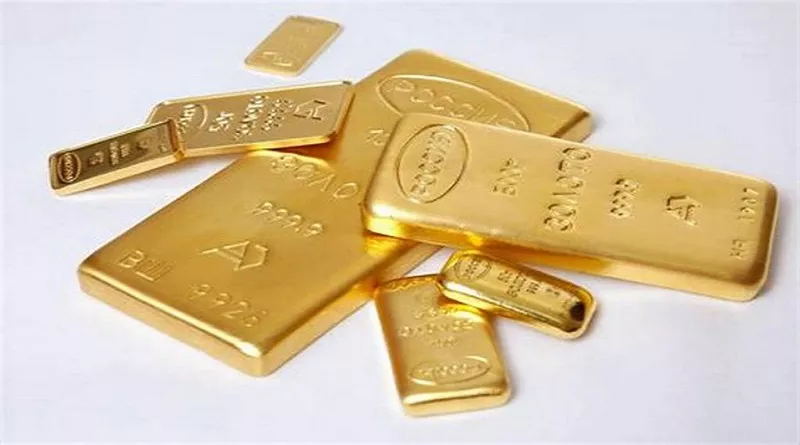Gold has long been considered a safe-haven asset, attracting investors during times of economic uncertainty. However, in recent months, the gold spot price has seen a noticeable decline. This phenomenon has raised questions among investors and market analysts alike. To understand the reasons behind the falling gold prices, it is essential to consider a range of factors, including economic indicators, market dynamics, geopolitical events, and shifts in investor sentiment.
Economic Indicators and Monetary Policy
One of the primary factors influencing gold prices is the broader economic environment, particularly the actions of central banks and their monetary policies. The U.S. Federal Reserve (Fed), for example, plays a crucial role in this regard. In recent years, the Fed has embarked on a path of tightening monetary policy, which includes raising interest rates and reducing its balance sheet. Higher interest rates increase the opportunity cost of holding non-yielding assets like gold. As a result, investors may choose to allocate their capital towards assets that provide a return, such as bonds, which become more attractive with rising yields.
Additionally, the strength of the U.S. dollar is inversely related to gold prices. Gold is priced in dollars, so when the dollar appreciates, gold becomes more expensive for buyers using other currencies, reducing its demand. The Fed’s hawkish stance has contributed to a stronger dollar, putting downward pressure on gold prices.
Inflation Expectations
Inflation expectations significantly impact gold prices. Traditionally, gold is seen as a hedge against inflation. However, the relationship between gold and inflation is complex and influenced by various factors. When inflation is anticipated to rise, investors may flock to gold to preserve their purchasing power. Conversely, if inflation expectations decline or remain stable, the demand for gold may decrease.
In recent times, there have been mixed signals regarding inflation. While some indicators point to persistent inflationary pressures due to supply chain disruptions and robust consumer demand, others suggest that inflation may moderate as central banks tighten monetary policies. If investors believe that inflation is under control, the allure of gold as an inflation hedge diminishes, contributing to its price decline.
Geopolitical Events and Market Sentiment
Geopolitical events often drive gold prices due to the asset’s safe-haven status. Political instability, conflicts, and economic uncertainties typically lead to increased demand for gold as investors seek refuge from potential market turmoil. However, the impact of geopolitical events on gold prices can be short-lived and influenced by the broader economic context.
For instance, the resolution or de-escalation of geopolitical tensions can lead to a rapid decline in gold prices as the immediate need for a safe-haven asset diminishes. Moreover, if the global economic outlook improves despite geopolitical challenges, investors might reallocate their assets towards riskier investments, further reducing the demand for gold.
Supply and Demand Dynamics
The fundamentals of supply and demand also play a critical role in determining gold prices. Gold mining production, recycling rates, and central bank activities all contribute to the supply side of the equation. On the demand side, jewelry, technology, and investment sectors are key players.
In recent times, there has been a relative stability in gold supply with no significant disruptions in mining activities. However, the demand side has shown variability. For example, during economic downturns or periods of high uncertainty, investment demand for gold tends to spike. Conversely, in more stable economic environments, investment demand may wane, exerting downward pressure on prices.
Technological Advancements and Market Trends
Technological advancements and evolving market trends can also influence gold prices. The rise of digital currencies, particularly cryptocurrencies like Bitcoin, has introduced a new dynamic to the investment landscape. Some investors view cryptocurrencies as a digital alternative to gold, potentially diverting funds away from traditional precious metals.
Furthermore, technological innovations in mining and extraction processes can affect gold supply. Advances in technology can lead to more efficient extraction and processing of gold, potentially increasing supply and impacting prices.
Speculative Trading and Market Sentiment
Gold markets are also influenced by speculative trading and overall market sentiment. Futures and options markets for gold are highly active, and speculative positions can lead to significant price fluctuations. When speculative traders anticipate a decline in gold prices, they may take short positions, amplifying downward pressure on prices.
Market sentiment, driven by news, economic reports, and investor psychology, plays a crucial role in short-term price movements. For instance, positive economic data or optimistic market outlooks can reduce the perceived need for safe-haven assets like gold, contributing to price declines.
Global Economic Growth and Equity Markets
Global economic growth and the performance of equity markets have a significant impact on gold prices. During periods of robust economic growth and strong equity market performance, investors may prefer riskier assets like stocks over safe-haven assets like gold. This shift in investment preference can lead to a decline in gold demand and, consequently, its price.
Conversely, during economic downturns or market corrections, gold typically sees increased demand as investors seek stability. The current global economic landscape, marked by recovery from the COVID-19 pandemic, has seen varying degrees of growth across different regions. While some economies have rebounded strongly, others continue to face challenges. This uneven recovery can influence gold demand differently in various markets.
See Also What Is The Spot Trading Strategy?
Conclusion
The decline in gold spot prices can be attributed to a confluence of factors, including economic indicators, monetary policy, inflation expectations, geopolitical events, supply and demand dynamics, technological advancements, speculative trading, market sentiment, and global economic growth. Understanding these factors provides a comprehensive perspective on the recent trends in gold prices.
As the economic environment continues to evolve, it is essential for investors to stay informed about the multifaceted influences on gold prices. While the current trend may show a decline, gold’s status as a store of value and a hedge against uncertainty ensures its enduring relevance in investment portfolios. By keeping an eye on the interplay of these factors, investors can make more informed decisions and navigate the complexities of the gold market with greater confidence.


